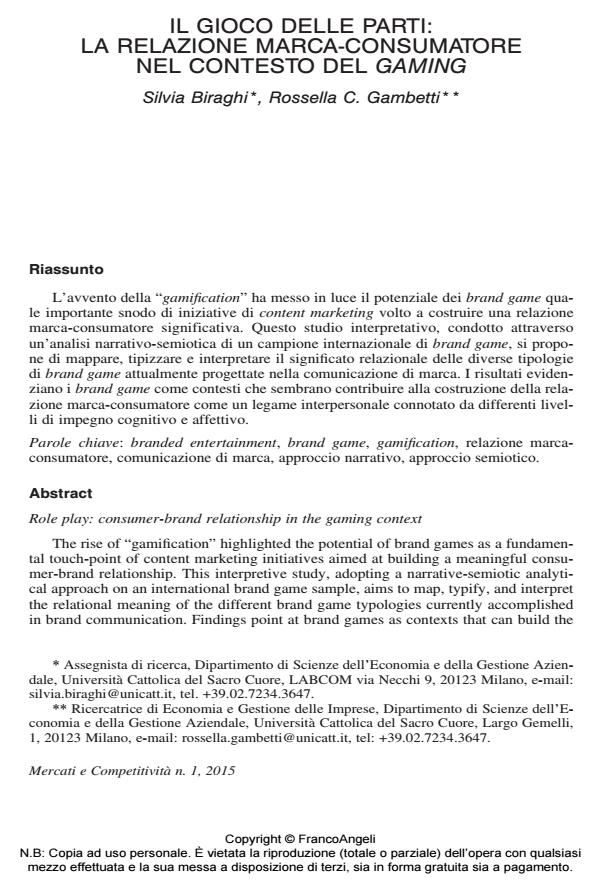Il gioco delle parti: la relazione marca-consumatore nel contesto del gaming
Titolo Rivista MERCATI E COMPETITIVITÀ
Autori/Curatori Silvia Biraghi, Rossella C. Gambetti
Anno di pubblicazione 2015 Fascicolo 2015/1
Lingua Italiano Numero pagine 25 P. 97-120 Dimensione file 119 KB
DOI 10.3280/MC2015-001006
Il DOI è il codice a barre della proprietà intellettuale: per saperne di più
clicca qui
Qui sotto puoi vedere in anteprima la prima pagina di questo articolo.
Se questo articolo ti interessa, lo puoi acquistare (e scaricare in formato pdf) seguendo le facili indicazioni per acquistare il download credit. Acquista Download Credits per scaricare questo Articolo in formato PDF

FrancoAngeli è membro della Publishers International Linking Association, Inc (PILA)associazione indipendente e non profit per facilitare (attraverso i servizi tecnologici implementati da CrossRef.org) l’accesso degli studiosi ai contenuti digitali nelle pubblicazioni professionali e scientifiche
L’avvento della "gamification" ha messo in luce il potenziale dei brand game quale importante snodo di iniziative di content marketing volto a costruire una relazione marca-consumatore significativa. Questo studio interpretativo, condotto attraverso un’analisi narrativo-semiotica di un campione internazionale di brand game, si propone di mappare, tipizzare e interpretare il significato relazionale delle diverse tipologie di brand game attualmente progettate nella comunicazione di marca. I risultati evidenziano i brand game come contesti che sembrano contribuire alla costruzione della relazione marca-consumatore come un legame interpersonale connotato da differenti livelli di impegno cognitivo e affettivo.
Parole chiave:Branded entertainment, brand game, gamification, relazione marcaconsumatore, comunicazione di marca, approccio narrativo, approccio semiotico
Silvia Biraghi, Rossella C. Gambetti, Il gioco delle parti: la relazione marca-consumatore nel contesto del gaming in "MERCATI E COMPETITIVITÀ" 1/2015, pp 97-120, DOI: 10.3280/MC2015-001006